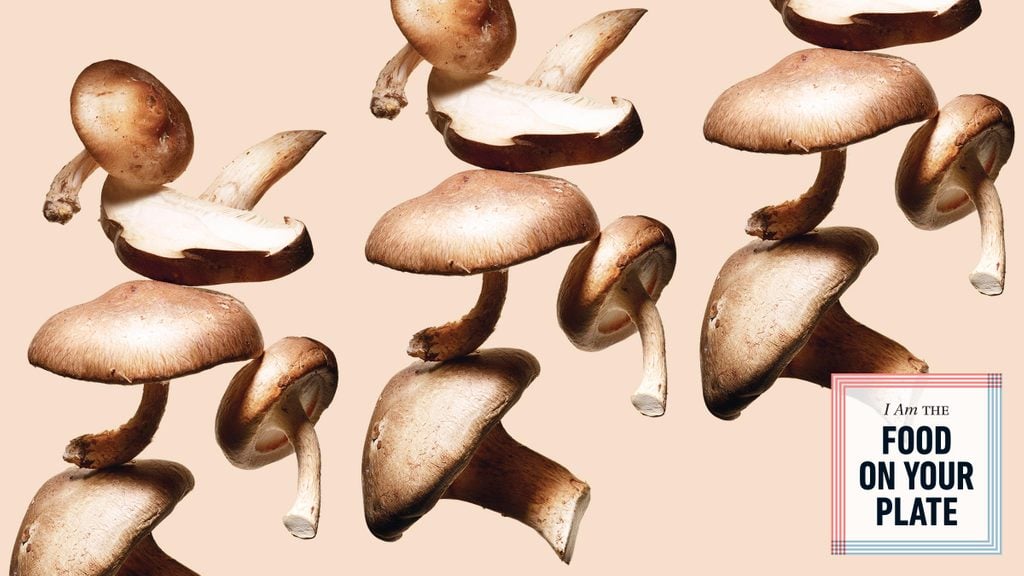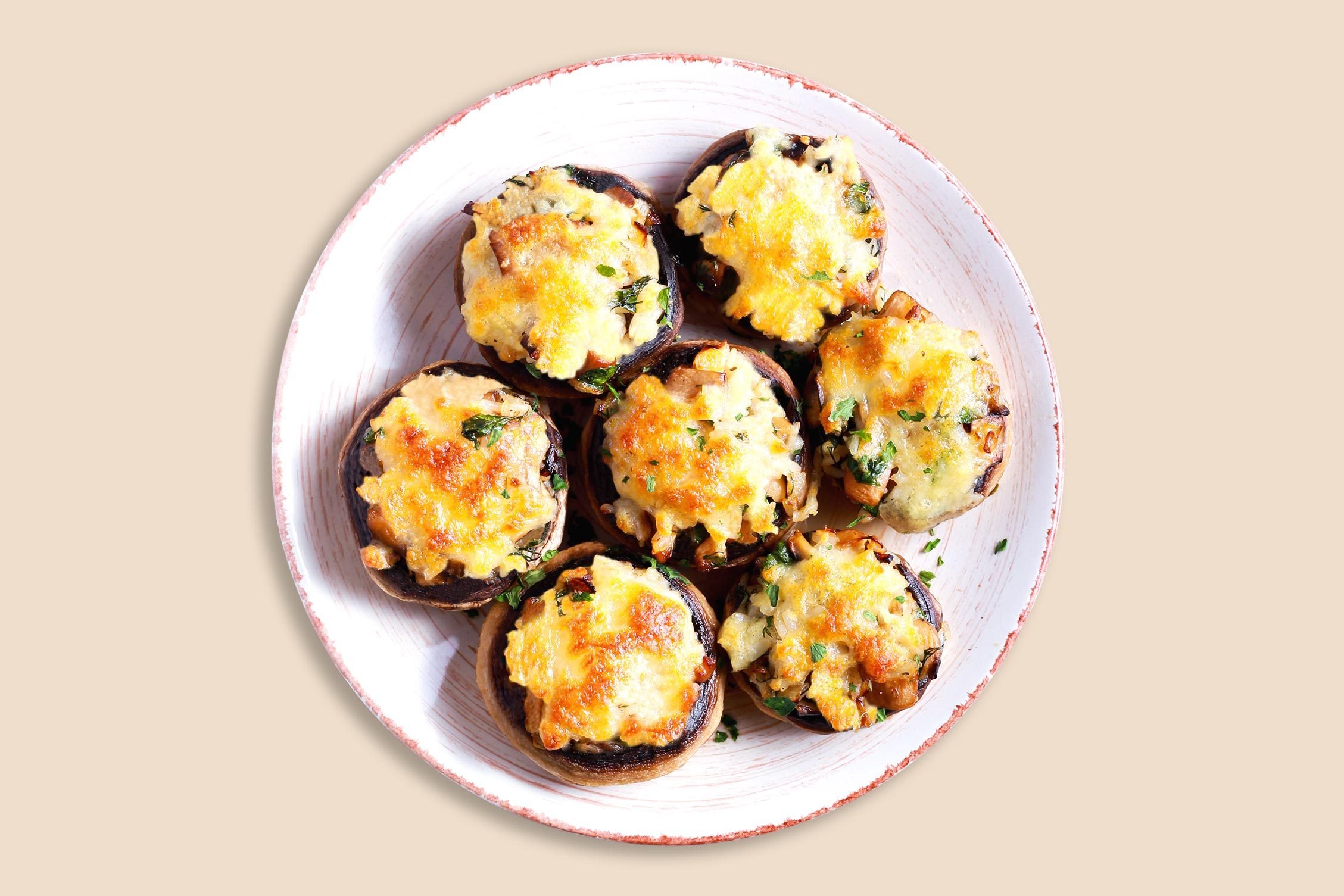If Mushrooms Could Talk, Here’s What They Would Tell You
Updated: Mar. 30, 2023

A magic, wild, meaty treat.
I am not an animal, a plant, or a mineral. Take a minute to get your head around what a crafty 20 Questions choice that makes me, infuriating little brothers and sisters on car rides everywhere. “What is it?” they shout, to which their torturer finally answers: I, mushroom, am a fungus.
I do keep you humans guessing. I am both edible and toxic, vegetarian yet meaty in flavor, wild and domesticated, a contemporary health craze and an ancient remedy. I can send your mind on a wild hallucinogenic flight. I can also kill you. And I come from a mysterious, much larger organism underfoot that you can barely comprehend. I am its fruiting body, in fact, as it spreads invisibly underground or through the fibers of a log. You can pick me as you do an apple off a tree, but you will leave almost all the superorganism behind.
Those rootlike threads you occasionally spy on my stem? They are not roots but fragments of my spreading life-form. Those delicate frills sheltered beneath my shelf or cap? They are marvels of evolutionary engineering, gills from which I release my spores by the billions. I like to think of them as nature’s origami—if you could lay the unfolded gills of just one button mushroom flat, they’d cover a desktop.
I’d wager that when you hear my name, you imagine the umbrella-capped toadstool of not only white button mushrooms but also fairy tales, fables, Super Mario Bros., and Smurfs. But that image is falsely narrow. I can grow like shelves on a tree trunk, round like marshmallows, translucent and gelatinous like jellyfish, and in a cascade of spines that in the case of the lion’s mane mushroom look like a long white beard.
Even the ubiquitous white button mushroom started as a peculiarity, discovered in Pennsylvania nestled in a bed of brown cremini mushrooms. Though it looks different from the cremini, both are variants of the same species. (The portobello, meanwhile, is just an extra-large cremini.)
In the kitchen, no matter my variety—oyster, shiitake, enoki; there are hundreds of edible ones—I add deep, savory flavor. I am one of nature’s best meat stand-ins for flavor, texture, and heartiness. I just scratch that itch, making me appeal to vegetarians and omnivores alike.
To properly bring out all that flavor, cook off all my water over high heat, then brown me in a pan. Use me in a filling for pastas and dumplings such as ravioli and pierogi. Cook me with cream or tomatoes, and I’ll make a pasta so rich and filling you won’t miss the meat. I’m great on meat though, including as duxelles, the thick mixture of minced mushrooms and shallots that is a key ingredient in beef Wellington.
There’s some misguided kitchen folklore about how you should never wash a mushroom because it strips away flavor. This is almost always not true. Go ahead and wash me; just make sure to dry me well so that I brown properly.
Wild mushrooms—chanterelles, morels, truffles (an anomaly because they grow underground)—really can be intoxicatingly tasty, but they are hard to find and therefore more pricey than their cultivated cousins. (Conversely, if a restaurant touts a “wild” oyster, shiitake, or cremini special, beware; those varieties are farmed.) Lore abounds about mushroom hunters who sneak out early in the morning and park their cars stealthily for fear of being followed to their shroomy stashes in the woods.
Perhaps most valued is the white truffle from Alba, in the Piedmont region of Italy, whose musty aroma shouts when it’s shaved raw over buttered fresh pasta or a fried egg. In 2007, a Hong Kong–Macao casino magnate spent $330,000 on a three-pounder—a sign that my prestige has overtaken any rational appraisal of value. (Another sign: the premium price shoppers pay for “truffle” oil, almost always made from synthetic flavors and not truffles at all.)
I continue to be credited with health benefits, some more legit than others. Most of the varieties you eat have an array of antioxidants, vitamins, and minerals, including all-important vitamin B and selenium. The maitake mushroom, also called hen-of-the-woods, is remarkably high in vitamin D. But caveat emptor on those hyped “adaptogenic” mushroom teas; they’re perfectly fine for you but unlikely to provide the benefits listed on the label.
In Northern California in 2017, heavy rainfall led to a bigger than usual crop of the death cap, a mild-tasting little thing that is responsible for 90 percent of human deaths-by-mushroom worldwide. That year, more than a dozen people got disastrously sick, sustaining neurological damage and requiring liver transplants. Another shroom craze afoot is decidedly more fun: “Magic mushrooms” that contain psilocybin are again all the rage. Several species of me come with this not entirely legal hallucinogenic included. Their surprisingly middle-aged users are often less interested in the trip than they are drawn to the promise of reducing anxiety, depression, and PTSD. Can I do all that? The research suggests yes. Would you expect anything less from something as magical as me?

Mushroom-Stuffed Mushrooms
Lightly trim ends of 2 pounds of cremini mushrooms, separate stems from caps, and mince the stems and half the caps. Reserve the remaining caps to stuff. Melt 3 tablespoons butter in a 10-inch skillet over medium-high heat, and add one large (4-ounce) minced shallot and 1 teaspoon minced thyme leaves. Cook, stirring until tender, about 2 minutes. Add minced mushrooms and cook, stirring until water evaporates and mushrooms thicken and darken, about 15 minutes. Stir in 1/3 cup panko bread crumbs and season with salt and pepper. Toss remaining caps lightly in olive oil and salt, stuff with cooked mushroom mixture, and arrange on rimmed sheet. Cook at 450°F until mushrooms are tender, about 20 minutes. Sprinkle grated cheddar cheese on each mushroom, return to oven, and cook until cheese is melted and beginning to brown. Serve.
Kate Lowenstein is a health editor currently at Vice; Daniel Gritzer is the culinary director of the cooking site Serious Eats.